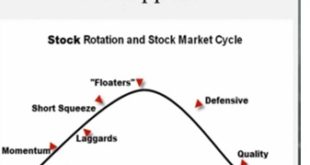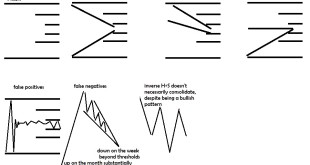In the book Trader Vic there was a chapter on Dow Theory. The author went over some lesser known aspects of early dow theorists.I plan to look this up if I can get around to finding the book when I get a chance to look for it.
From memory, the aspects of importance here are that when declaring a change in the primary trend ALL major indices must agree. It is not enough for the dow to break below the most recent primary low, but all major indices must break these levels.
While the all world index, the dow and the nasdaq and others broke below the October 2014 primary low, the S&P and Russel 2000 did not.
As such, this confusion and “breakdown” could very well be a fakeout. According to this aspect of the early dow theorists, it should NOT be treatet as anything but “primary bull still intact”.
The disagreement by the markets or “divergence” of course can certainly mean EITHER that the other major indicies overreacted to the recent selloff, or that the dow and russel under reacted. One approach is, “when in doubt, stick with the prior trend”.
Another which Vic also advocated was treating the market sort of like an insurance premium. The insurance company should expect that the older a person gets, the more vulnerable they are to a medical problem. Similarly, the older the bull market the more susceptible it should be to declines and economic problems.
However, he also stated that the closer it got to the extreme, the more likely it was to be an “outlier”. It wasn’t really clear how he would treat “outliers”. Would he give up on his thesis of positioning more cautiously after the market entered “outlier” territory”? Would he position more neutral? Would he just remain more vigilant in watching for signs of tops technically? Would he just trade different timeframes and avoid trying to position one way or another for the longer term until it ended?
Nevertheless, he would handicap the duration and magnitude of the move as well as the probability that the moves reached certain thresholds in the primary markets. He also would look at moves in different durations. The moves as an active swing trader would not be classified as the same as a longer term investor who held for years. So a breach of a minor low made in July of 2015 for example would have a different duration, move expectancy and timing approach to the October 2014 low.
If you believe in this theory of examining moves median and mean length and magnitude, you’d probably also enjoy Bulkowski’s Encyclopedia of Chart Patterns, and/or Encyclopedia of Candlestick Charts where he loads it with statistics like this relative to individual patterns on individual stocks rather than studying broad market moves in general like Trader Vic and Trader Vic II.
The main reason I want to pull up a copy of the book out when I get a chance to reexamine these differences between how he defined “swing trader”, “position trader” and “Investor” and the statistics on each move.
Nevertheless, considering the implied volatility of the VIX, the liquidity concerns following brokerage outages and the nature of a fast selloff I’m putting my money on the low holding. I believe that using the criteria of the VIX spike surpassing 2011 highs that the “panic” was filled with over exaggeration rather than under exaggeration. Over exaggeration means we can rebound in all markets and continue the primary bull market with these levels representing the next primary low.
Due to the volume profile of stocks below, if we somehow don’t manage to hold volume profile support at around S&P 1825-1880, I think you can be pretty confident that the last recent primary low will not hold and look to find an entry to the downside; ideally on a rip higher and retest of those support ranges
For those keeping track, I said in the last post that if I had to make a trade when we were in “no man’s land” I’d side on selling premium and selling a call spread. That was because I looked at the volume profiles to define a range that provided the potential for loose and fast action from the range of just north of 205 and just under 190 when at the time SPY was around 200. With changes in price action and support, your position should change as well. I think you can manage a long entry, or sell a put spread as the upside outweighs the downside in terms of price and overall management of the position would provide a positive return on risk. Meanwhile, the VIX is still high so you can profit from a decline in volatility if prices don’t move much.
If you enjoy the content at iBankCoin, please follow us on Twitter




